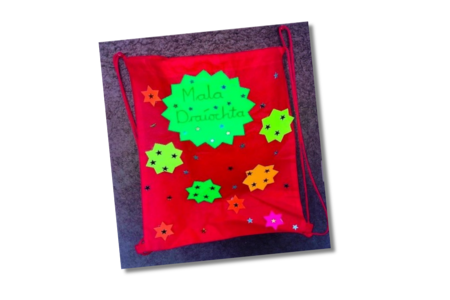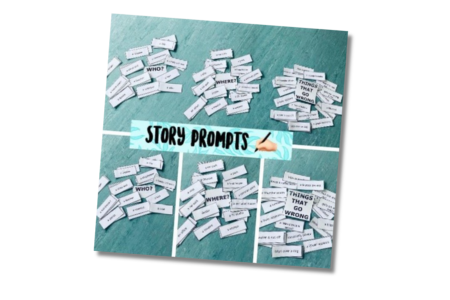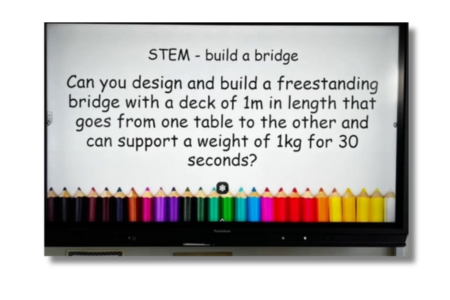These activities and ideas can help turn your classroom into a dynamic space where learning feels like play, play feels like learning and where engagement, attainment, creativity and collaboration are boosted and celebrated!
Here are some easily adapted, practical and playful ideas for the senior primary classroom that encourage engagement and align with learning goals:
1. Escape Room Challenge
- How it works: Create a classroom escape room with puzzles, riddles and challenges based on a topic. For example, math problems to “unlock” clues or historical facts to piece together a timeline.
- Why it’s playful: Children work collaboratively, using problem-solving and critical thinking while having fun.
2. Mystery Box or Bag Exploration

- How it works: Place an object or items related to a lesson (e.g., fossils for science or artifacts for history) in a box. The children guess what’s inside using clues and then investigate its significance. I use my Mala Draíochta all the time for this – I made this years ago, have used it with all classes and it’s still going strong. A mystery bag can be used to feel and describe the object inside or with clues to crack to find out what is in it.
- Why it’s playful: Sparks curiosity and excitement, making learning an adventure.
3. Story Dice

- How it works: Use dice with pictures, words or prompts to create stories. Roll the dice or pick a card and the children must incorporate the elements into a story.
- Why it’s playful: Encourages creativity and storytelling in a low-pressure, fun way. This also works well as Gaeilge.
4. Build and Balance

- How it works: Give pupils materials like blocks, cards or tinfoil to create structures. Add challenges like building the tallest tower or balancing a shape.
- Why it’s playful: Combines engineering skills with hands-on fun and competition.
5. Movement Break Games
- How it works: Play games like “Simon Says”, “Freeze Dance” or scavenger hunts tied to academic content. For example, find objects around the room that start with the letter “B” for literacy (for junior classes) – ask senior classes to extend this by describing the object with an adjective with the same letter (eg: blue bag), find objects around the room that have an obtuse angle for maths, find objects around the room that are from a different country for geography etc.
- Why it’s playful: Keeps energy levels up and engages kinaesthetic learners. A great movement break activity.
6. Classroom Market
- How it works: Create a classroom economy where pupils “buy” and “sell” items using fake currency. Use it to teach math concepts like addition, subtraction and budgeting. Include trade and percentages for senior classes.
- Why it’s playful: Turns math into a real-world simulation that feels like a game.
7. Mystery Science Experiments
- How it works: Conduct experiments where the outcome is unknown (e.g., mixing colours, testing what floats, creating weather measurement tools). Let the children predict and then observe results.
- Why it’s playful: Encourages scientific curiosity and exploration.
8. Role-Playing Scenarios
- How it works: Assign the children roles in scenarios like a mock trial, historical debate or running a “business”. Connect the roles to the lesson. Use stories they already know (even if they are for younger children) as this can really enhance older children’s engagement;
– The tiger who came to tea and left such a terrible mess must be brought before the courts and held accountable!
– Was the big bad wolf really bad or just misunderstood?
– Did the wise old man change the old woman’s perception of space in her house or did she still feel it was a squash and a squeeze?
By using stories for younger children and fairytales that older children already know, the “learning the story” element is removed, and children only need to focus on the task at hand. - Why it’s playful: Immersive learning brings concepts to life.
9. Word and Number Hunts
- How it works: Hide vocabulary words, math problems, or clues around the classroom. Children must “hunt” for them and solve puzzles to complete a challenge.
- Why it’s playful: Combines physical activity with problem-solving.
10. Create-Your-Own Game
- How it works: Let the children design games based on what they’re learning (e.g., a board game about ecosystems or a trivia game about historical events).
- Why it’s playful: The children take ownership of their learning while being creative.
11. Classroom Olympics
- How it works: Host an Olympics with subject-based challenges, like spelling bees, math races, or geography trivia. Incorporate movement for physical activity.
- Why it’s playful: Builds team spirit and makes learning a celebration.
12. Mystery Readers or Guest Experts
- How it works: Invite a surprise guest to read a story or talk about their job. Drop hints and clues throughout the week to build excitement and gets the children guessing.
- Why it’s playful: Adds anticipation and real-world connections to learning.
13. Creative Construction Zones

- How it works: Provide materials (e.g., LEGO bricks, cardboard, or clay) and let the children design solutions to a problem, like building a bridge or designing a vehicle. Click here for more ideas about Paper Bridges.
- Why it’s playful: Encourages hands-on exploration and critical thinking.
14. “Would You Rather?” Debates
- How it works: Pose fun and thought-provoking “Would you rather?” questions related to the lesson (e.g., “Would you rather live during the Roman Empire or Ancient Egypt?”)
- Why it’s playful: Promotes critical thinking, reasoning, and class discussions in a light-hearted way.
15. Headbands game
- How it works: Engage the class in any topic as a way to elicit prior knowledge and assess where the children are at or as assessment of learning after a topic. Either the teacher or class writes words linked to a topic on post-its. Each child sticks a post-it on their forehead so they can’t see what is written on it. The other children must describe the word without using the word.
- Why it’s playful: This is practice for all the children in describing topical words and also understanding the meaning of each word’s description. This is a great game for any topic in any subject.
More reflections on play centred learning from Gillian:
https://www.instagram.com/the_glitter_and_coffee_teacher

Leave a Comment